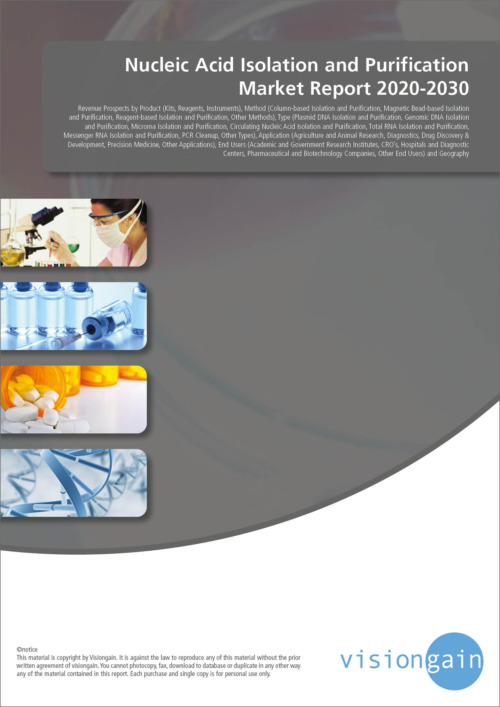Over the past decade, rapid advancements in molecular biology and biotechnology have fueled the growth of the global nucleic acid isolation and purification market. The market, which is primarily driven by the growing demand for genetic testing and personalized medicines, is expected to grow at a CAGR of 6.5% between 2021 and 2028, eventually reaching a value of $6544.65 million by 2028.

The nucleic acid isolation and purification process is an essential part of molecular biology research, used for extracting DNA or RNA from different types of tissues or cells. These extracted nucleic acids are then used for various diagnostic and therapeutic applications, including the discovery of new drugs, personalized medicine, and genetic testing.
One of the key growth drivers for the nucleic acid isolation and purification market is the increasing demand for genetic testing. Genetic testing enables healthcare providers to provide personalized treatments to patients that are effective and efficient, leading to better patient outcomes. Genetic testing also helps identify individuals at risk of developing certain diseases, allowing for early detection and prevention. As a result, the increasing demand for genetic testing is driving the demand for nucleic acid isolation and purification techniques, subsequently fueling the growth of the market.
Another significant growth driver for the market is the increasing adoption of next-generation sequencing (NGS) techniques. NGS enables the rapid and cost-effective sequencing of large volumes of DNA or RNA, which is advancing research in fields such as personalized medicine, infectious disease diagnosis, and drug development. This has led to an increase in research activities, thereby driving the demand for nucleic acid isolation and purification technologies.
Despite the growth drivers, several challenges are impeding the growth of the nucleic acid isolation and purification market. One such challenge is the high cost of instruments and reagents used in nucleic acid isolation and purification. The cost of these instruments and reagents is a significant barrier to entry for small and medium-sized laboratories, hindering the adoption of nucleic acid isolation and purification techniques. Additionally, the lack of skilled personnel with the knowledge and expertise required to operate these instruments may also impede the growth of the market.
Moreover, the ongoing COVID-19 pandemic has had a mixed impact on the market. While the pandemic has driven research into new treatments and vaccines, it has also disrupted supply chains, leading to a shortage of raw materials and reagents needed for nucleic acid isolation and purification. However, efforts by governments and pharmaceutical companies to mitigate these challenges are expected to drive long-term growth in the market.
The nucleic acid isolation and purification market is characterized by significant competition, with several major players operating in the market. These players are investing heavily in research and development activities to introduce new and innovative products and expand their market share. Tiangen Biotech (Beijing) Co., Ltd. is one of the major players in the market, focusing on providing high-quality nucleic acid isolation and purification solutions to customers in various fields, including in-vitro diagnostics, infectious disease diagnostics, and biopharmaceuticals.
In conclusion, the nucleic acid isolation and purification market is poised for significant growth over the next decade, driven by the increasing demand for genetic testing and personalized medicine, and the adoption of next-generation sequencing techniques. However, the market faces several challenges, including the high cost of instruments and reagents and the shortage of skilled personnel with the expertise to operate these instruments. Nevertheless, with continued investment in research and development, and efforts to mitigate these challenges, the market is expected to continue its upward trajectory for the foreseeable future.